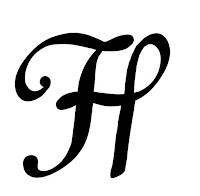To get more of understanding of my word I have created a mind map with the meanings and synonyms of it. My first thoughts about this word as a typeface were about Serif font, thin and simple. On last Friday critique we have been separated into groups where we had to talk to people from our group and get their opinion about given world.
My group agreed with me that the font should be in Serif font, very simple and thin.
They also suggested me to try link the letters together or make them look squeezed.
My choice of font in which I will base my typeface upon will be Serif font because Serif font is legible and widely used for body of text as it make it easier to read. With the use of serifs I can link and attach together my letters, which would make it look simple and readable even from the distance. I hope that this will well represent my given word 'Coordinated'.
I chose to base my typeface upon Badoni because is Serif font, simple, modern and each letter works very well together.
Using Photoshop I have experimented with Badoni font. I really like the first final outcome of it as it gives an idea how I want my final font to look like. Image of final outcome:
Design 1
Design 2
Design 3
I have done some sketches. I have created six different designs which look at different ways of approaching the letter B, N, R, A, C, M and E.
On the first design I wanted to add to the letters thin, readable and Serif look. I think I will use try to use it as my final resolution. Second design is of the letter 'C' and 'E' with reflection. I think it has a bit of meaning of the word 'coordinated' as every single letter is linked together. The last four designs were about experimenting with font style and thickness. I really like the third design as the letters are thin, smooth, clear and readable. I will try to use it as my final one.
I have sketched five different ideas for each letter from the alphabet.
Ideas for the Name of the typeface:
- Semptimela
- Soleria
- Salif Regular
- Salif Rose
While searching for different artists, books, posters ect which could inspire me I have found couple of typefaces which their work intrigued me. First of them is Kuenstler Script which was designed in 1902 by the in-house studio at the D Stempel AG Foundry. It was originally titled Künstlerschreibschrift, which translates from German to English as "handwriting of artists".
The second typeface which I found and is related to my project is Melany Lane. It was designed by Yellow Design Studio. The type face is a flourishy script based on traditional letter forms, but with the added quirks and warmth of hand-drawn type. I will try to use those fonts as my inspiration for my own work.
Kuenstler Script
Melany Lane
I have also looked at fonts used for tattoo design because they are using handwritten fonts and calligraphy. It gave me an inspiration for my own typeface design. Examples of work founded on the internet:










































































